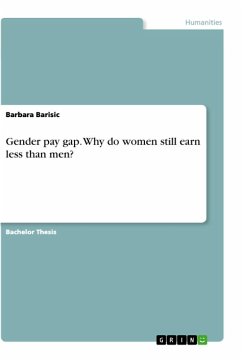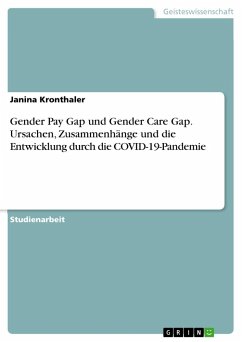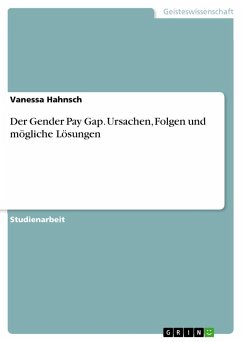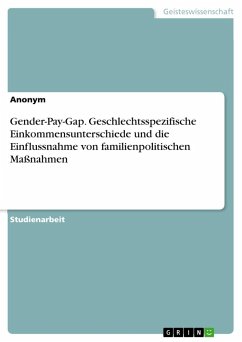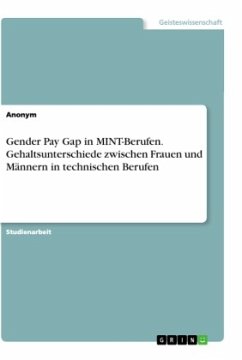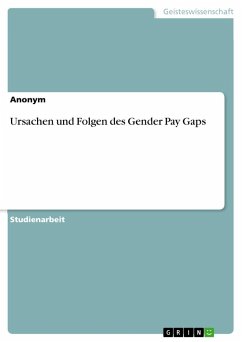Bachelor Thesis from the year 2021 in the subject Gender Studies, grade: 1,3, University of applied sciences, Munich, course: International Management, language: English, abstract: This Bachelor Thesis gives a historical overview of women in the labour market, as well as their fight for the prevention of gender-based discrimination concerning salary and access to various jobs. In addition to this, the definition of the gender pay gap is explained, just like the differences between adjusted and unadjusted gender pay gap and how this distinction affects the implementation of possible solutions. The third chapter gives an insight into the reasons for inequality of salaries between women and men, such as educational segregation that later leads to the occupational segregation, negotiating skills of women (or lack of those skills), parental leave, glass ceiling, glass escalator, and sticky floor correlation, lack of affordable childcare, the way work is valued. When it comes to the solutions, chapter three shows that more legal regulations, pay transparency, equalising family leave, increasing female salaries, and companies committing to gender-balanced leadership could help close the gap. Apart from the discourse analysis, the questionnaire was conducted to find out and show diverse people's opinions in the author¿s environment (family, friends, co-workers, neighbours, fellow students) on the gender pay gap. For example, what they think the main reasons are, solutions, when could the gender wage gap end, to what extent do they agree or disagree with the given statements. Another goal was to explain gender (in)equality in their workplace and compare survey results with those in the first part of the research. It can be then seen that the research design consists of both qualitative and quantitative analysis, the so-called mixed methods.

